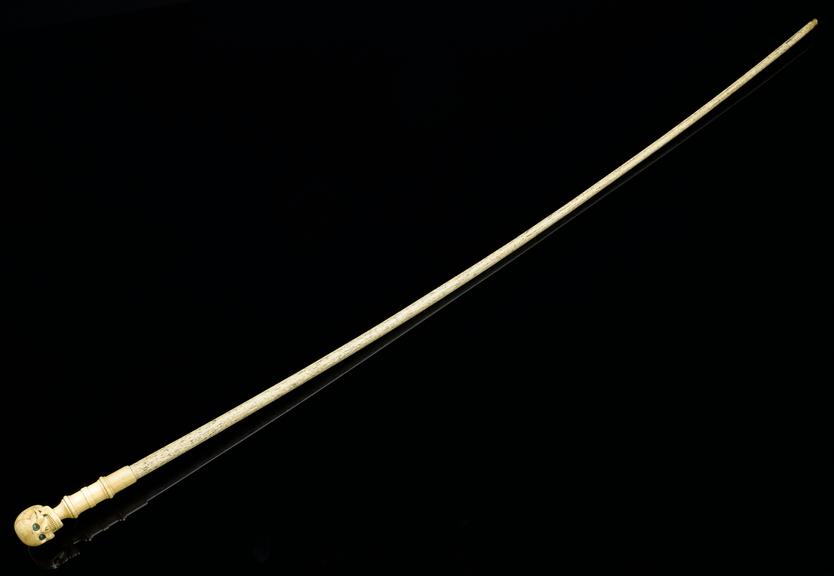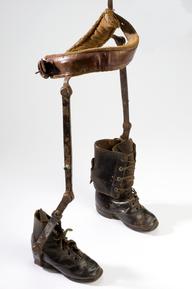





Whalebone walking stick with skull form pommel in ivory, once owned by Charles Darwin, probably English, 1839-1881
Charles Darwin owned this walking stick. It is made of whalebone, a hard-wearing material suited to walking sticks. The ivory hand grip or the pommel at the top of the stick is a skull. The skull has two glass green eyes. Darwin called his stick his ‘morituri’, a type of ‘memento mori’. These objects remind their owners of the short time people live on earth. Charles Darwin (1809-82) is famous for his theory of evolution outlined in The Origin of Species, first published in 1859. Darwin’s walking stick was collected by Henry Wellcome as a relic of someone Wellcome considered a ‘great man.’
Details
- Category:
- Orthopaedics
- Collection:
- Sir Henry Wellcome's Museum Collection
- Object Number:
- A4962
- Materials:
- whalebone, pommel and collar, ivory and pommel and collar, glass
- type:
- walking stick
- credit:
- Wellcome Trust (Purchased from Stevens)




